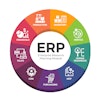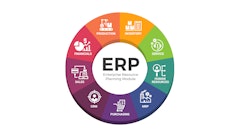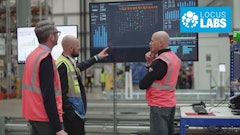
The labor market has improved for transportation and warehouse operations over the past few years. The intense competition for drivers and other critical positions, which prompted companies to shell out sizeable signing bonuses during the height of the supply chain crisis, has eased. But the reshoring trend brings new challenges into focus.
Today, as more companies ramp up reshoring efforts to stabilize supply chains, they’re typically able to find enough job applicants to fill open positions, but they’re also discovering that’s not enough to ensure success. The next-level challenge is two-fold: companies need to ensure they attract the right people and keep them on board.
Ensuring long-term reshoring success requires fresh training, upskilling and retention strategies that apply across the operation, from frontline workers to top leadership. Here are seven ways you can stabilize talent and reshore the right way.
1. Evaluate labor costs and labor availability when choosing locations
High employee turnover often comes with hidden costs, including decreased productivity, employee burnout, and the significant financial burden of replacing key personnel. The cost of replacing an employee can range from 50-200% of their base salary, making it more cost-effective to retain employees through competitive merit increases rather than replacing them.
When it comes to labor availability, many reshoring operations struggle right out of the gate because they can’t find and sustain the qualified talent when they make the move. That’s why it’s critical to carefully evaluate the local labor pool. Don’t assume people with the required skills are available or that the claims officials make when trying to lure jobs to their area are accurate.
Independently assess labor availability for every role, including top leaders. Will people with the right skills be willing to relocate to an area with few comparable opportunities? Keep in mind they have their own career runway to consider.
Also remember that recruiting and onboarding approaches that work well abroad can’t necessarily be replicated in a new area. You’ll need leaders capable of building out a management team and optimizing processes in a region-specific context.
2. Adjust incentives as needed to minimize churn
When supply chains are under maximum stress, HR leaders often develop robust onboarding and training programs out of necessity. In many cases, they put the right incentives into place for the time, for example, offering a bonus or pay raise at 30, 60, 90 or 120 days to keep employees on board through a training period.
But as time passes, you may need to adjust incentive time triggers. If the time horizon is too long, employees may not be around long enough to receive the incentive. Keep an eye on employee turnover and retention data to see if you need to make an adjustment to minimize churn.
3. Be flexible during training periods to keep high-potential employees onboard
Training programs tend to feature regimented processes, e.g., employees aren’t eligible for a raise, promotion or lateral move during the first 90 days. By definition, this puts all employees in the same category, but high-potential employees are special, so acknowledge their value and give them a reason to stay.
It’s a good idea to reward them immediately, letting them know you see their potential. It may upset the masses, but if you lose low-performing employees as a result, so be it. Your talent pool’s overall quality will rise as a result.
4. Remember that talent follows talent — in and out the door
Related to the point above, keep in mind that a certain amount of attrition can be beneficial because talent follows talent. When you reward your most talented employees, they’ll let friends know your company is a great place to work, and referrals from associates are the fastest way to build an effective retention strategy and a positive workplace climate.
Conversely, when talented employees don’t feel valued, word gets around, and when you lose key talent, other critical employees may follow. It’s crucial to set the bar high and keep it there or mediocrity will set the standard, which is a productivity killer.
5. Make sure department leaders aren’t hoarding talent
Many HR professionals in food logistics are already focused on upskilling as a way to keep top talent. But be aware that some departmental leaders might allow seasoned high-potential employees to fly under the radar once their training is complete to keep them engaged in daily operations.
For example, department leaders who are focused on KPIs may be reluctant to identify high-performers for cross-training or upskilling. It’s important to make sure department leaders are giving high-performers their due by offering new opportunities. Monitoring data on intradepartmental promotions, cross-training, etc., can identify potential trouble spots.
6. Don’t neglect frontline supervisors
Direct supervisors shape the on-the-job experience for employees, so it’s important to ensure they have the time, training and tools to support employee success. Too often, companies focus on senior leaders and lack insight into the pressure on supervisors.
Are frontline supervisors overwhelmed by reporting requirements? Do they have time to interact with employees and identify those with potential? Do supervisors have the tools they need to ensure employee success? A periodic assessment of what’s required of supervisors and an analysis of how they spend their time can answer these questions.
7. Commit for the long haul
Lastly, it’s important to keep in mind that development and reform initiatives aren’t one-and-done — sustained effort over time is required to make sure a reshored operation continues to thrive. Once a reshored operation is established, it’s crucial that leaders onsite collect feedback and adjust to sustain initial success.
For example, leaders should solicit ideas for improvement from frontline workers, ensure supervisors have the resources they need and monitor the quality of the employee experience on an ongoing basis.
The cost of replacing an employee can be significant, so labor stability must be considered a crucial business objective, not just a siloed HR KPI. Implementing these strategies to stop churn stabilize talent is imperative to achieving reshoring success.




















